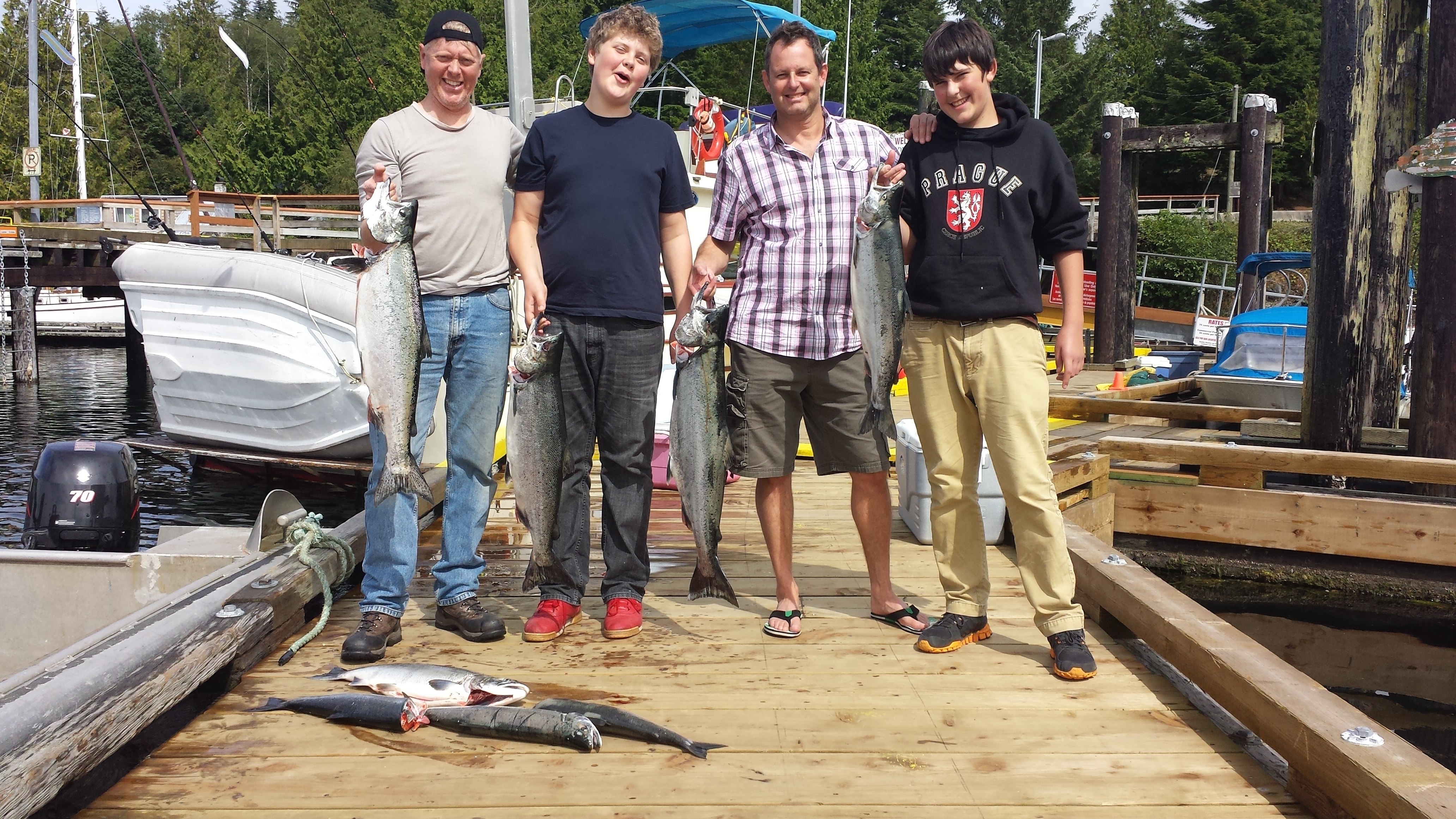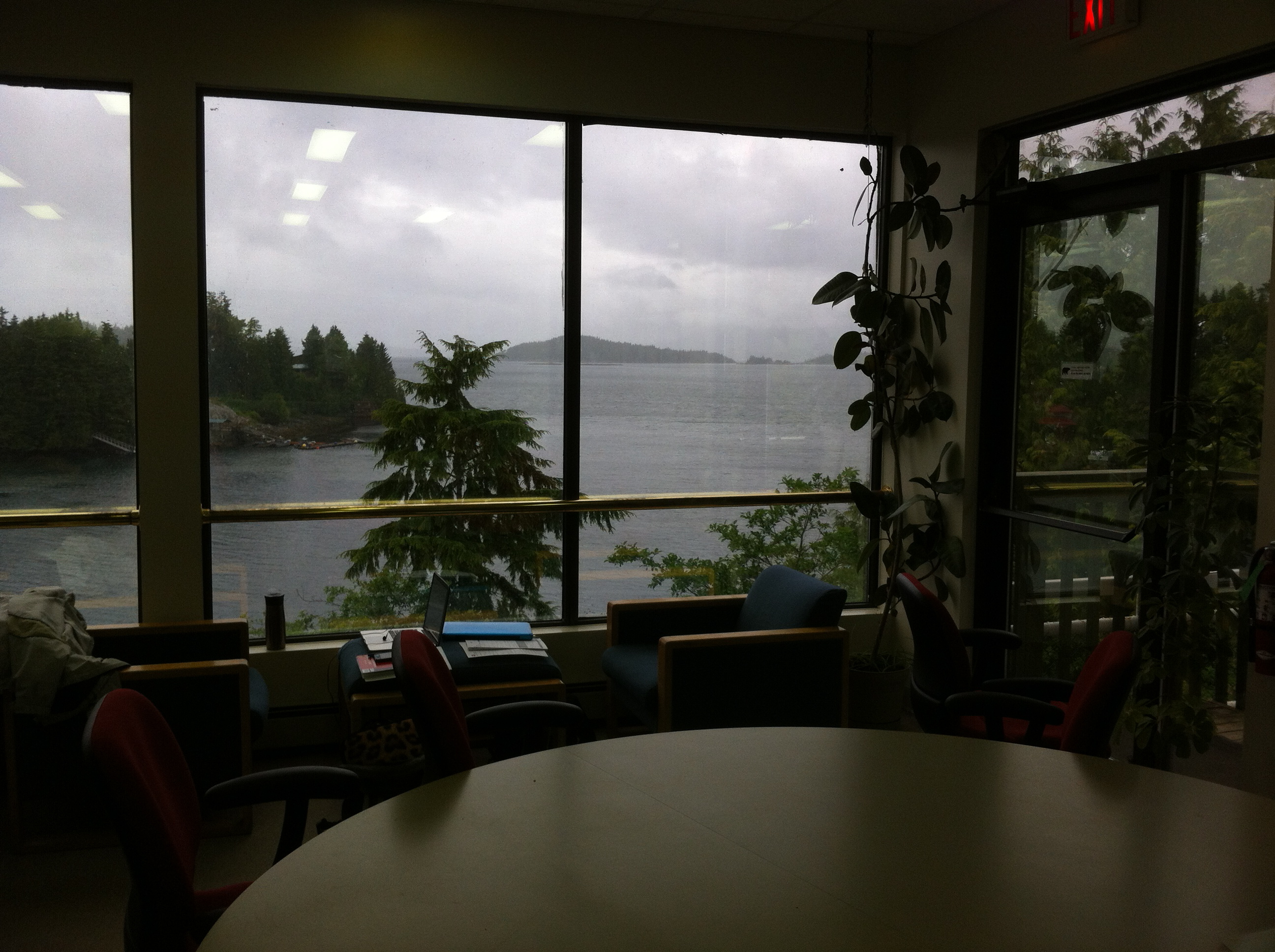
Perched as it is on the outer coast of Vancouver Island, Bamfield provides access to an incredible diversity of marine, terrestrial, freshwater, and cultural sites. Before Highway 4 to Ucluelet and Tofino was upgraded, Bamfield was the sportfishing and marine excursion hub of the Pacific West Coast on Vancouver Island. The flats off of Cape Beale are home to huge halibut. And unlike other fishing towns with drop offs near the coast, the coast of Bamfield has a gently sloping bottom which offers numerous near offshore fishing opportunities.

Bamfield Marine Sciences Center
Entering Bamfield by water, one of the first things you will notice is the large concrete building on the port side, this is the Bamfield Marine Sciences Centre. Six universities cooperate in running the marine sciences program here. We like to stop to check out their interactive marine tanks where you can touch the sea creatures or check out the skeletons of their marine mammal exhibit.
The Bamfield Marine Sciences Centre is also host to Music by the Sea, one of our must-see music festivals. Every year you will find the Oracle nearby during this wonderful musical event.
The buildings that house the BMSC were originally the eastern terminus of a trans-pacific telegraph cable station from 1901 to 1959. The Pacific Cable Board Station was designed by one of British Columbia’s best known architects, Francis Rattenbury. His other famous landmarks include BC’s Legislative Buildings and Empress Hotel in Victoria, and the Vancouver Courthouse. The first telegraph messages to encircle the globe were relayed in 1902. But time and technology marches on and in 1959 a newer state-of-the-art cable station was built in Port Alberni and the Bamfield Station was shut down.
A decade later, the National Research Council, working with five western universities created the nucleus of a marine research facility. In 1972, summer classes began. The Bamfield Marine Sciences Centre is a shared campus of the Universities of Victoria, British Columbia, Alberta, Calgary, and Simon Fraser — students and faculty from all over the world pursue research in a wide range of topics.

Bamfield Lifeboat Station
Across the harbour from the marine station – in West Bamfield — the iconic red and white of a Coast Guard facility identifies the Bamfield Lifeboat Station. Established in 1907, Bamfield was the first lifesaving station on Canada’s Pacific Coast and was equipped with the first motorized lifeboat in Canada. The station, along with key developments in marine radio, a telegraph line, and the Dominion Lifesaving Trail (now the celebrated West Coast Trail, a 75 km hiking trail from Bamfield to Port Renfrew) all grew out of the need to protect & serve mariners along the Westcoast of Vancouver Island – the notorious Graveyard of the Pacific.
Continuing in its innovative maritime heritage, Bamfield is now home to the rigorous RHIOT (Rigid Hull Inflatable Operator Training) school. It is also home to the 800 km Neptune Project, one of the most significant scientific endeavors of our time.